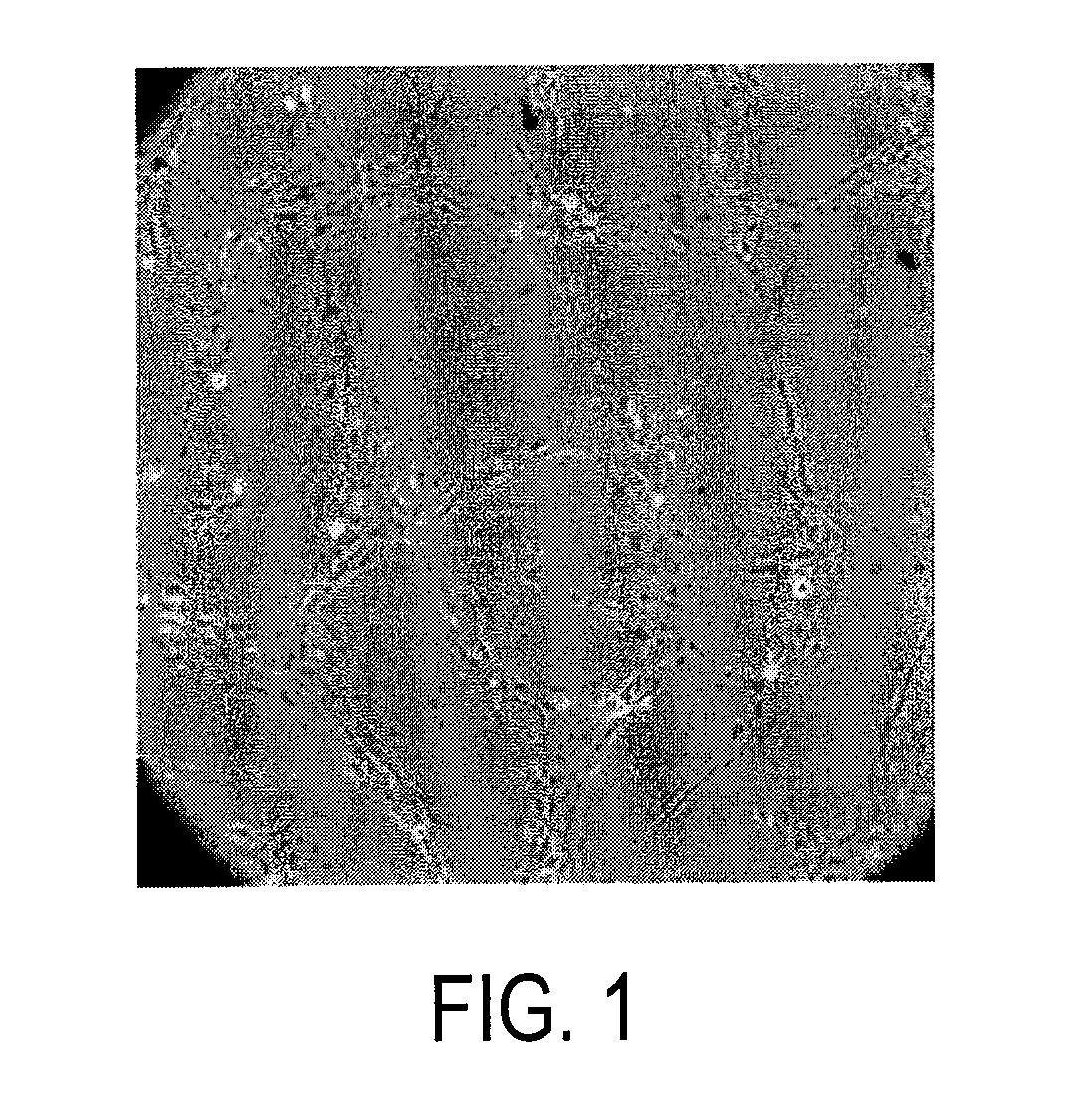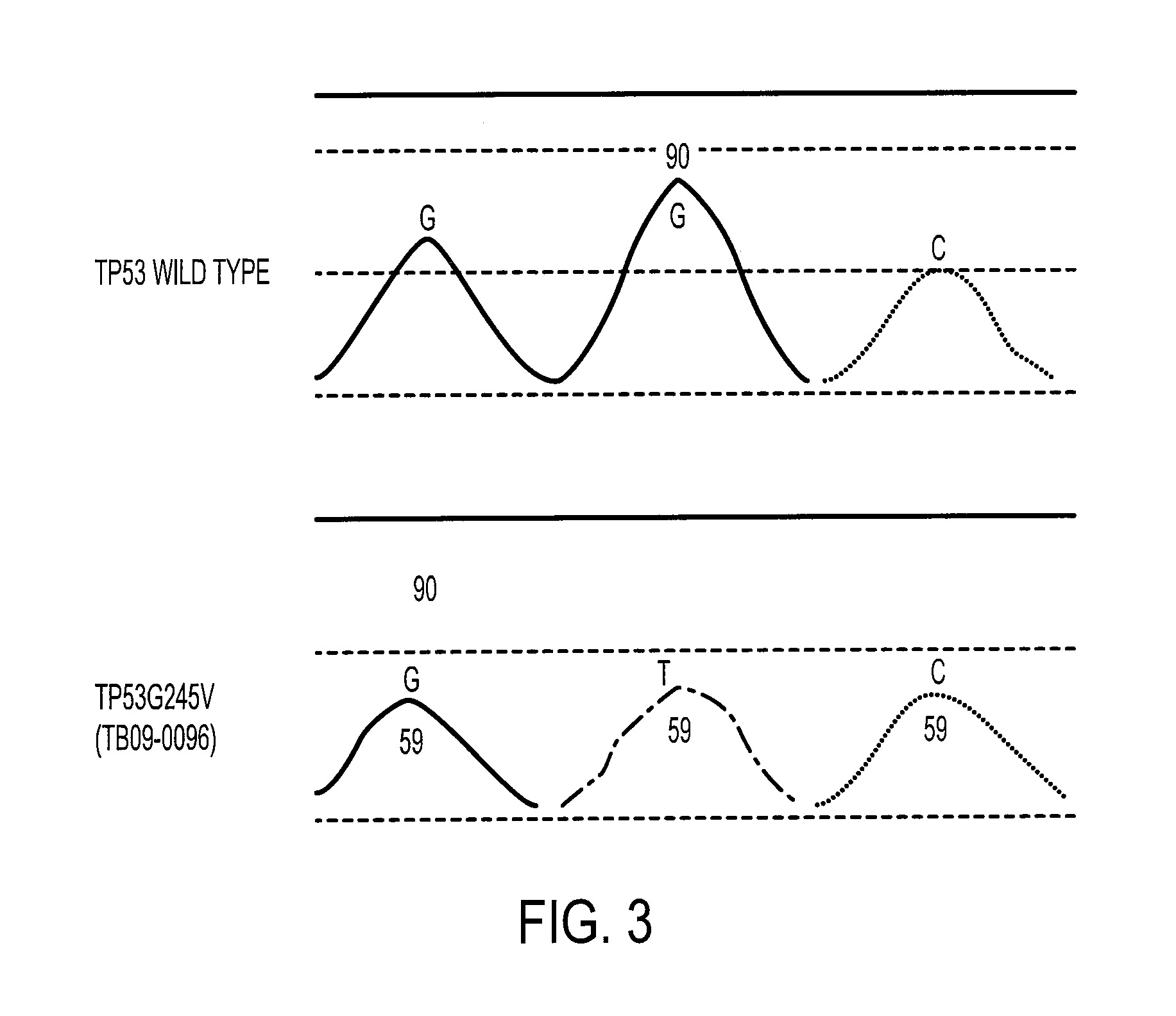Homozygous and heterozygous IDH1 gene-defective human astrocytoma cell lines
a human astrocytoma cell line and heterozygous technology, applied in the field of homozygous and heterozygous idh1 genedefective human astrocytoma cell lines, can solve the problems of progressing to higher-grade lesions, poor outcome, and neurologic dysfunction and eventually death
- Summary
- Abstract
- Description
- Claims
- Application Information
AI Technical Summary
Benefits of technology
Problems solved by technology
Method used
Image
Examples
example 1
Generation of T13096-0096 (IDH1R132 Heterozygous) Cell Line.
[0037]An anaplastic astrocytoma tissue sample TB09-0096, was dissociated by Liberase™ enzyme (a purified enzyme blend) at 100 ug / ml, and dissociated cells were cultured in stem cell medium. This tumor contains IDH1R132H and TP53G245V mutations. After two and half months culturing (5 passages), cells were transferred to SD medium in a new flask, where growing cells adhered to the flask. Analysis of these cells showed that all contained the original IDH1R132H and TP53G245V mutations (data not shown). After 9 months culturing in SD medium (23 passages), cells were diluted and seeded into 96 well plates. After 5 weeks of growth, single cell colonies were picked and expanded to 6 well plates (FIG. 1). gDNA from different colonies was prepared and the IDH1 gene sequenced (FIG. 2). Most of the colonies were heterozygous for the IDH1R132H mutation. cDNA from these lines and subsequent sequence results showed both the wild-type and ...
example 2
Generation of the HR-TB09-0096 (IDH1R132H Homozygous) Cell Line.
[0038]Established standard protocols for gene targeting by homologous recombination with recombinant adeno-associated virus (rAAV) construct. The TB09-0096 (IDH1R132H heterozygous) cell line was used as the parental cell line. Targeting vectors were constructed to introduce IDH1 alleles in the TB09-0096 cell line. An infectious rAAV stock harboring the targeting sequence was generated and applied to the parental cell line, generating cell clones that harbor the rAAV transgenes. A PCR-based method was employed to screen for correct homologous recombinants. Diagnostic PCR primer pairs (designated P1-P2) were used to screen for homologous recombination. The screening approach employs one primer that anneals within the SEPT element and a second primer that is outside the homology region. Homologous recombination was confirmed in 8 clones. These clones were next subjected to sequencing analysis to validate mutation knock-in....
PUM
| Property | Measurement | Unit |
|---|---|---|
| time | aaaaa | aaaaa |
| periods of time | aaaaa | aaaaa |
| cell morphology | aaaaa | aaaaa |
Abstract
Description
Claims
Application Information
 Login to View More
Login to View More - R&D
- Intellectual Property
- Life Sciences
- Materials
- Tech Scout
- Unparalleled Data Quality
- Higher Quality Content
- 60% Fewer Hallucinations
Browse by: Latest US Patents, China's latest patents, Technical Efficacy Thesaurus, Application Domain, Technology Topic, Popular Technical Reports.
© 2025 PatSnap. All rights reserved.Legal|Privacy policy|Modern Slavery Act Transparency Statement|Sitemap|About US| Contact US: help@patsnap.com



